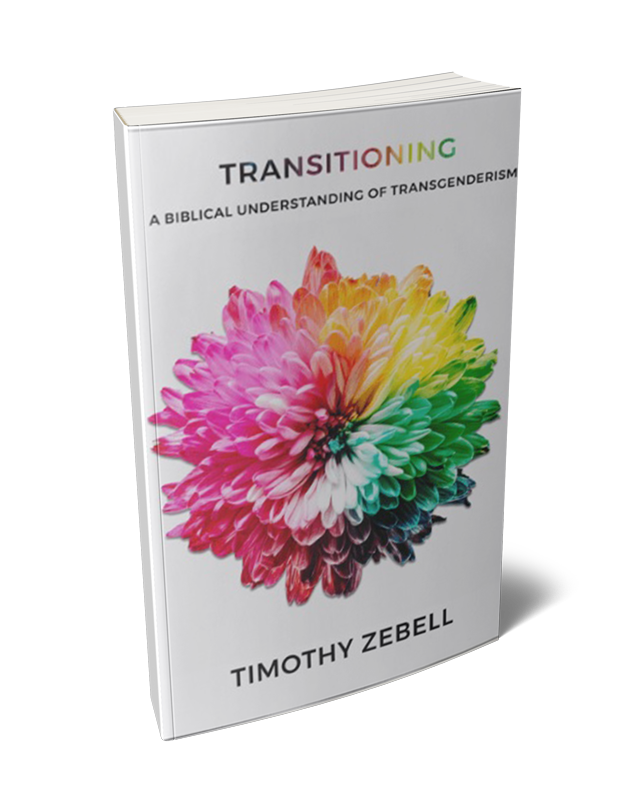Similar to the scientific studies, the Bible does not distinguish between one’s biological sex and one’s gender. Instead, these are inextricably linked together. Genesis 1:27 teaches, “So God created man in his own image, in the image of God he created him; male and female he created them.” The Hebrew word translated as “man” is adam and means “humanity,” or “mankind.”[1] Thus, Genesis 1:27 reveals that God made mankind in His own image, and mankind was created as consisting of two categories—male and female.
“Male” in Genesis 1:27 is the Hebrew word zakar which, according to the Complete Word Study Dictionary, is “a masculine noun indicating a man, male, human. It indicates a person as male as opposed to female (Gen. 1:27; Lev. 18:22). … In its collective and plural forms, it denotes men (Ex. 13:12; Judg. 21:11; 1 Kgs. 11:15).”[2] Likewise, “female” is the Hebrew word neqebah which is simply “A feminine noun meaning female.”[3] According to Genesis 1:27, God created mankind, and these human beings are subdivided into two distinct categories—male and female.
It is conceivable that one could claim Genesis 1:27 is speaking only of biological sex, if taken in isolation; however, this creative act of God is expounded upon in Genesis 2:18–23:
Then the LORD God said, “It is not good that the man should be alone; I will make him a helper fit for him.” Now out of the ground the LORD God had formed every beast of the field and every bird of the heavens and brought them to the man to see what he would call them. And whatever the man called every living creature, that was its name. The man gave names to all livestock and to the birds of the heavens and to every beast of the field. But for Adam there was not found a helper fit for him. So the LORD God caused a deep sleep to fall upon the man, and while he slept took one of his ribs and closed up its place with flesh. And the rib that the LORD God had taken from the man he made into a woman and brought her to the man. Then the man said, “This at last is bone of my bones and flesh of my flesh; she shall be called Woman, because she was taken out of Man.”
The reason God created a second category of human being was not simply for sexual purposes—meaning for pleasure and reproduction. Instead, God sought to create someone who could help Adam in accomplishing his divine mandate. In English this word neged is often translated as a “fit,” “meet,” or “suitable,” helper, but it means “counterpart,” or “one who corresponds to but is opposite from.”[4] In other words, God determined to make a helper for Adam who corresponded with Adam—one who was a human being—but who was also opposite from Adam—one who did not have the same tendencies, strengths, or physical features as Adam. To accomplish this, God removed a piece of Adam’s sacred architecture (something we will examine in another chapter)—part of his side, or rib—and from this sacred piece God created Adam’s counterpart. It is only after this act that the Genesis account begins to refer to Adam in terms of gender.[5] In Genesis 2:23 Adam declares himself to be an iys, a man, and his counterpart to be issah, a woman, “Then the man said, ‘This at last is bone of my bones and flesh of my flesh; she shall be called Woman, because she was taken out of Man.’”
At this point gender is established, and new words are chosen to describe male and female. Adam names his counterpart issah which is “a feminine noun meaning woman, wife, or female.”[6] She is not merely a biologically distinct individual, a female, she is also his counterpart—a woman and, for Adam, a wife. Likewise, Adam names himself iys which means “a man, to be strong, firm.”[7] Inherent in these titles is the individual’s biological sex. However, these titles encompass far more than merely one’s biological sex—they also encompass the individual’s gender and its accompanying role.
This concept of gender as being counterparts unto each other for the purpose of accomplishing mankind’s divine mandate is pictured throughout the Bible. Men are uniquely equipped physically and emotionally to accomplish specific roles, as are women, and together the two genders can accomplish far more than they could ever hope to accomplish individually. Although the Bible presents men and women as being equal in value, the Bible never presents the two as being equal in purpose and function. The reality of distinct gender roles is perhaps most clearly portrayed in Ephesians 5:22–33 where the gender roles in marriage are offered as an illustration of the church’s relationship with Jesus Christ.
Gender and biological sex are not social constructions. Gender and its accompanying gender roles, exist because mankind has a unique purpose and responsibility before God. Just as God lives in relationship within the Trinity, so also God chose that mankind should image Himself by accomplishing its mission through two distinct sexes/genders living in relationship with one another. As such God created two sexes/genders—male/man and female/woman—who are distinct from one another both physically and emotionally.
Be sure to Read Timothy Zebell’s book Transitioning: A Biblical Understanding of Transgenderism.
Free Downloads
Share...
1. Baker, Warren and Eugene Carpenter. The Complete Word Study Dictionary: Old Testament, H#121, 16. Chattanooga: AMG Publishers, 2003.
2. Baker, H#2145, 290.
3. Baker, H#5347, 751.
4. Baker, H#5048, 704.
5. Jim Garlow. “Robert Gagnon: The Bible & Homosexual Practice – The Old Testament – Genesis 1 & 2.” Vimeo video, https://vimeo.com/68624959 (accessed June 12, 2014).
6. Baker, The Complete Word Study Dictionary, H#802, 104.
7. Baker, H#376, 46.
Unless otherwise noted, all Scripture quotations are taken from The Holy Bible, English Standard Version, copyright ©2001 by Crossway Bibles, a publishing ministry of Good News Publishers. Used by permission. All rights reserved.









